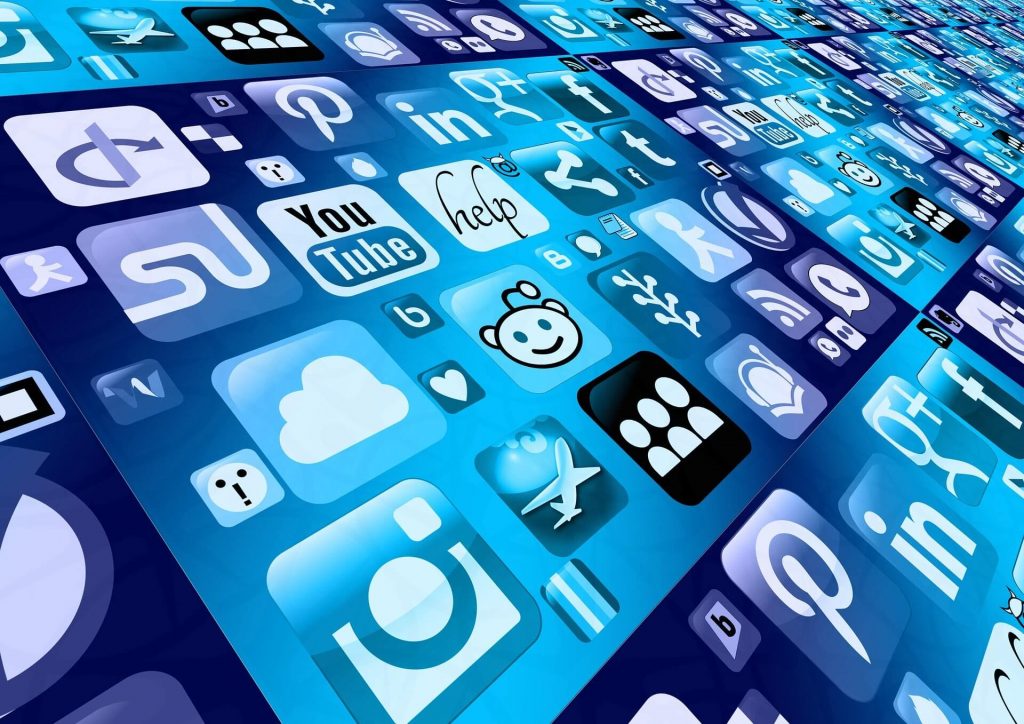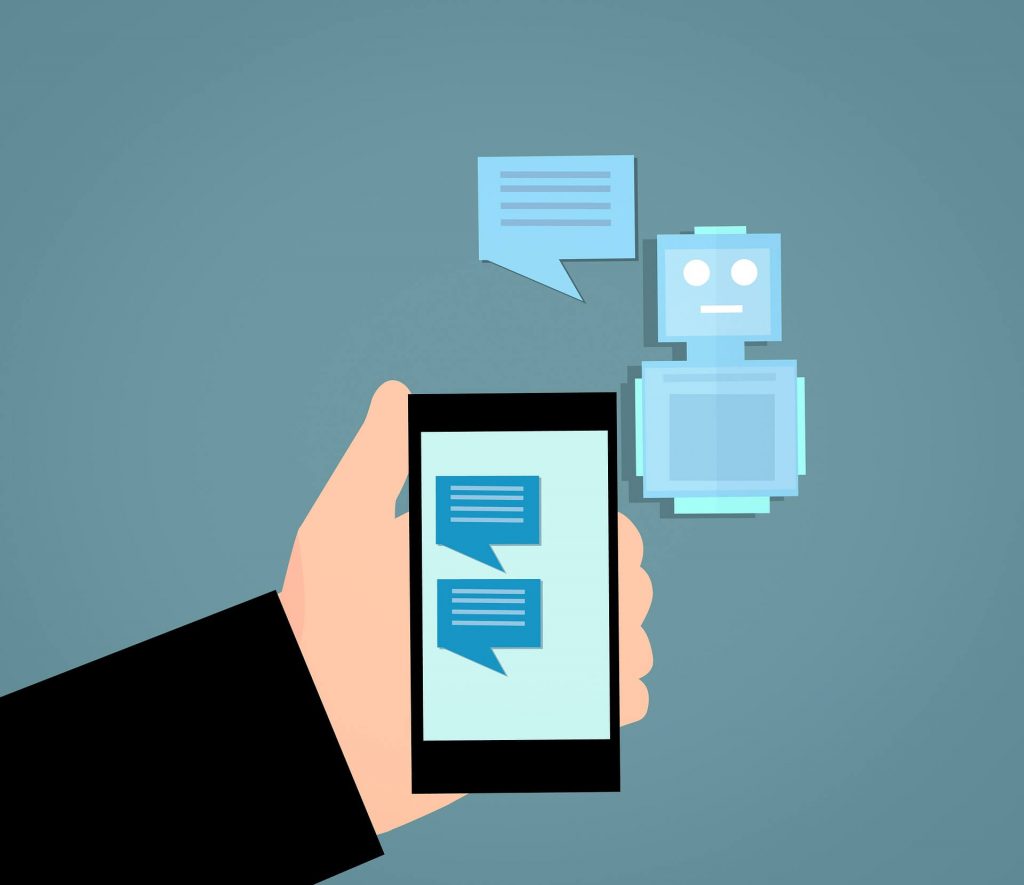Artificial Intelligence in Sci-fi movies is portrayed as synthetic consciousnesses at the edge of human ingenuity. Today whenever, we hear the word AI our minds automatically trigger ideas of movies such as iRobot, I Am Mother and Ghost in the Shell. Where we perceive AI as a distant idea far from our everyday reality.
However, in reality, AI is much more simple and way more common than our perception. Any system that for instance, deals with problem-solving, recognizing emotions or any task that usually dictates human intelligence is an Artificial Intelligence system.
What does all this have to do with Digital Marketing?
Far from the world of sci-fi, AI has become prominent in the field of Digital Marketing. Artificial Intelligence is being leveraged in a multitude of ways from enhancing the customer journey, increasing the return of investments, or drilling into your target audience. Using AI allows you to make data-driven decisions, and eliminates almost all of the speculations that would otherwise be involved.
Besides leveraging data for marketing decisions AI can be used a step further to actually eliminate the human need for different processes. This could be running Pay-Per-Click ads or even content generation. Many major news outlets, such as The Washington Post, Bloomberg News, and The Newyork times have all used AI content generation machines, also known as the “Robot Reporter”.
Robot Reporters can scrutinize a report as soon as it appears and produces an instant news story that covers the most relvant facts and figures.
You read more about the Robot Reporter here.
Content Generation
Today, there is a global industry revolving around content creation and content marketing. A report by Globe Newswire estimates that this industry will be worth more than 100 million USD within the next 5 years. Some marketers would even claim that content marketing is the only type of marketing. This is just to give you an idea of the size, potential, and relevance of it.
Content marketing includes everything from creating and distributing consistent, valuable, and relevant content to retain a specifically defined audience segment. Of course, ultimately the goal here is driving lucrative customer action. This includes items as simple as blog posts, to more images on Instagram, videos on YouTube, and posts to Facebook.

Here Artificial Intelligence has real potential and is being adapted and tested by various sectors. As mentioned above giant news outlets are already using AI to curate and even generate first draft content. It can suggest suitable topics and match them with the right audience segments, with almost no human interference.
There is a real potential for AI to go all the way from A to Z in from suggesting the content strategy, to implementation and execution. There are several marketing tools available today that offer some of these features.
Advertising Enhanced by Artificial Intelligence
Remember when producing advertisements were all about creativity, originality, and inspiration. Conveying a unique vision, selling a dream, etc. Well, for the most part, it still is, but we are living in a world that is overwhelmed with all types of ads, and they are everywhere. Gone are the times where your exposure to ads was limited to billboards, TV commercials, and in newspapers. Today you cannot scroll the net or open an app without seeing some kind of ad. We have become so accustomed to seeing them that we either learned to ignore them or quickly close them down without even blinking.
What does this mean for advertisers? For ads to be effective they need to look beyond the traditional inventiveness and vision, more into programmatic advertising. Using big data, algorithms to target and deliver ads efficiently. Placing your ads in front of your target audience when and where they are looking for you will make all the difference in your ad being closed and you losing money or clicked on and you make a return on your investment.
An interesting technology of enhanced AI marketing that may be overlooked sometimes is Facial Recognition. With an estimated global market worth of more than 10 billion USD and growing, facial recognition has gained a steady foothold and is on the rise.
When you first hear Facial Recognition, your mind might jump to security such as unlocking your iPhone, however, there are many more applications withing marketing than you can think of.
How does Facial Recognition Work?
There are four main steps in facial recognition:
- Detection: The first step is capturing the face. Usually, a camera is used to detect the face either alone or out of a crowd. This works best when you are staring directly at the camera, however technological advancements have found ways around this too.
- Analysis: Each human face has around 80 nodal points, these are measurable such as the distance between the two eyes, or the width of the nose and length of the jawline. The analysis includes finding all these nodal points mostly relying on 2D images since they are easier and more likely to match with data from public or archived photos in databases.
- Converting the Image into Data: All the collected nodes, or set of data, is shifted into a code also known as a faceprint. The numerical faceprint is just as unique as a fingerprint.
- Finding a Match: The last step is just running a comparison between your faceprint against a database of stored faceprints and finding an exact match.

You might now wonder how can this be actively used for running a marketing campaign. Well look at this interesting example:
Artificial Intelligence Leverages Human Emotions for Marketing
Expedia is a well-known company that operates an online travel platform. These were one of the foremost companies to actually merge facial recognition with their marketing campaign.
What Expedia did was, they created personalized travel experiences based on recorded emotions from displaying various travel destinations. Expedia could then quickly determine which images resonated how with different website visitors, and then tailor a travel experience based on that.
There are many other examples of businesses using Facial Recognition even in brick and mortar shops and restaurants even. In fact, once you start thinking of it, the possibilities are quite endless.
Chatbots
If you have recently used a pop-up chat service on a website to ask a question, it is most likely that you have been answered by a bot. More websites today are using chat-bots to engage and answer website visitors. Chatbots can have a real impact on businesses and customer experience, especially for businesses that just don’t have the workforce to engage and answer visitors promptly.

With chatbots stepping in, customers can find answers, be redirected, and even logged in as leads or prospects for follow up by employees when they get to it. This does not mean that chatbot can take over human interactions fully, at least not yet. But they can sure buy you time and help pave the way for you. Remember the trick here is not to replace your humans with chatbots altogether but to integrate them so that they complement each other. A visitor should with ease be able to switch to a human if their query needs it.
There are several types of chatbots nowadays. Traditional ones, that have a preinstalled set of responses. On the other side of the spectrum, you have smart chatbots. Smart chatbots are the real interesting game-changers. Not only do they answer in real-time, but also come up with unique answers. It is a matter of time until these smart chatbots can take on even more crucial and elemental tasks; such as actually landing a customer.
Using Artificial Intelligence for Behavior and Predictive Analytics
There is a shift if you look at marketing departments across different companies. You would realize that more companies are now acquiring programmers and data scientists. Some even have an entire dedicated data team. This comes as no surprise, since “data is king”, and without it, it is all guesswork and speculation at best.
As of last April, more than half the world’s population are active internet users, this is almost 5 billion people. Each person leaves a digital trace; whenever they make a search, visit a website, watch a video, or like an image. With all this, digital data humans can’t collect, dissect, and analyze without the help of AI.
Artificial Intelligence utilizes machine learning and big data to give bullseye insights to businesses. Allowing them to make data-driven decisions that have a positive return on their bottom line. There are no limits to the possibilities available from these huge data sets. The future will be more about predicting and influencing customer behaviour.
Conclusion
Whenever automation is involved, where decisions are left to a machine, there is always a moral dilemma. There are questions of error factors, privacy, and misuse of data.
Navigating between these worlds, a fast, efficient, responsive one. And a morally correct one. How can these two be merged together for the betterment of humanity, this is the challenge.
At Miklagard our conscience responsibility puts our morality before automation and leveraging data. You can read more about our social responsibility here. You can also engage us and pick our brain over an informal cup of coffee (our treat).
Simply leave a comment below or click here.


